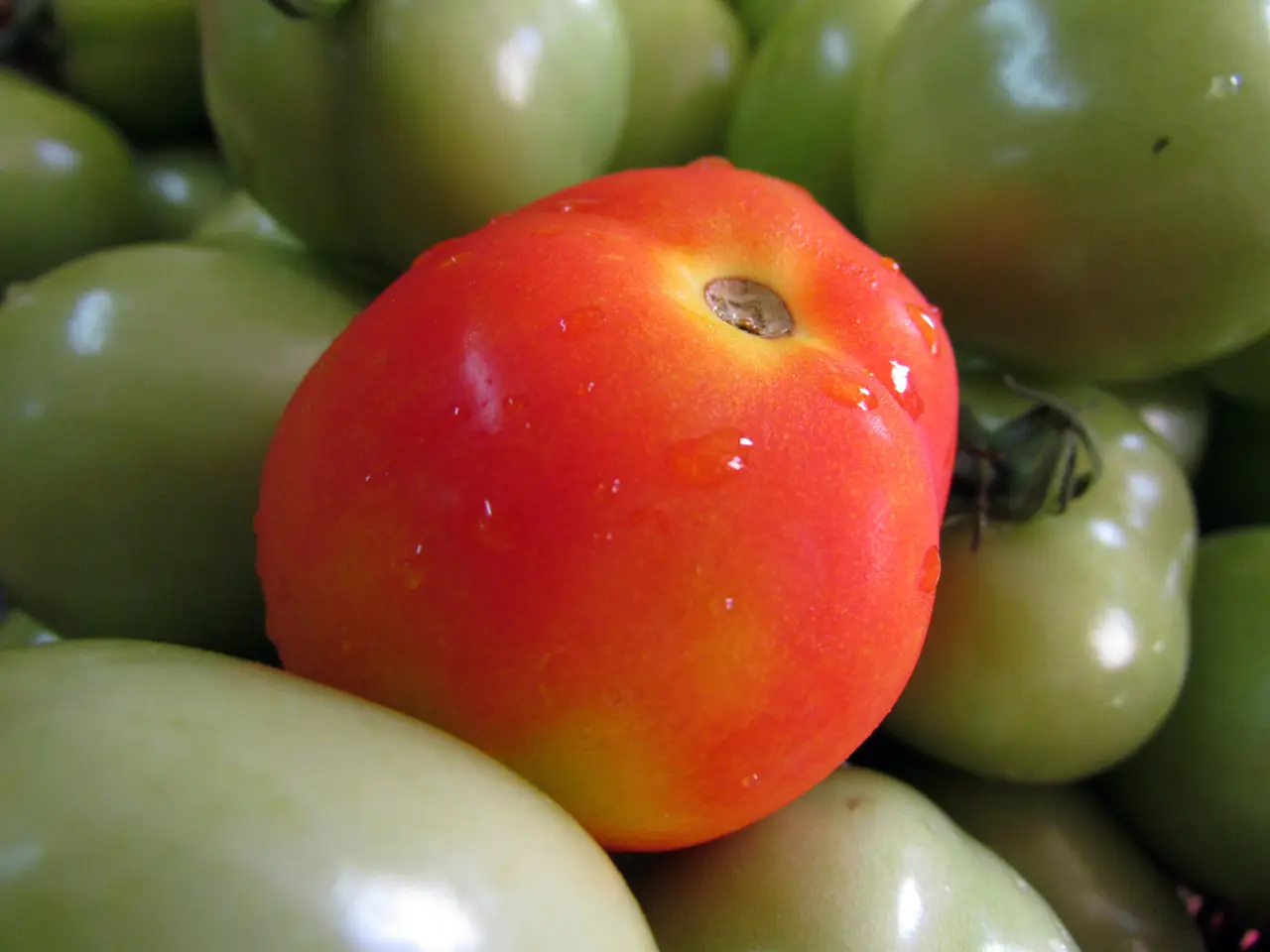Secrets for Safeguarding Tomatoes from Phytophtora Damage
Preventing and Treating Phytophthora Blight on Tomatoes
Phytophthora blight, a destructive disease affecting tomatoes and other solanaceous plants, can be a challenge for gardeners and farmers alike. However, effective methods for prevention and treatment involve integrated cultural practices, resistant varieties, environmental management, and targeted fungicide use.
Experts note that it's easier to prevent Phytophthora than to save infected tomatoes. The disease is caused by the pathogenic fungus Phytophthora infestans, which thrives in humid air and requires humidity above 76% and a relatively low temperature (around +20°C).
To keep tomatoes healthy, it's crucial to use resistant cultivars bred for resistance to blight, which significantly reduce infection risk. Crop rotation is another key preventive strategy, rotating tomatoes, potatoes, peppers, and eggplants with unrelated crops every 2–3 years to break the disease cycle and avoid cross-contamination.
Maintaining plant dryness is also essential. Avoid overhead watering and wet foliage; employ drip irrigation or soaker hoses to water plants at the base early in the day. Mulching can also help by applying 2–3 inch organic mulch layers to maintain soil moisture, suppress soil splash, and reduce spore dispersal onto foliage.
Proper plant spacing and pruning are vital. Space plants 24-36 inches apart and prune lower leaves and suckers to improve airflow and reduce humidity within the canopy, which hampers pathogen growth. Regularly remove diseased leaves, plants, and tubers and dispose of them away from the garden to reduce pathogen reservoirs.
When planting, use certified disease-free seeds or seed potatoes to prevent introducing the pathogen. In the greenhouse, ventilate regularly to prevent condensation from forming and water tomatoes in the morning to allow the soil to dry out by evening. Avoiding overwatering, ensuring good air circulation, and avoiding planting tomatoes near potatoes are also effective in preventing Phytophthora.
For treatment when blight symptoms appear, apply preventative fungicides such as chlorothalonil, mancozeb, or copper-based products before symptoms develop. These protect foliage and are most effective when applied during cool, wet weather every 7–10 days. Use modern targeted fungicides in rotation to avoid resistance, always following label guidelines and respecting organic certifications if applicable. Early detection and monitoring through regular crop inspection or advanced tools like satellite-based monitoring can enable timely fungicide applications and minimize spread.
By combining resistant varieties, cultural controls to reduce moisture and inoculum, vigilant monitoring, and judicious fungicide use, growers can effectively prevent and manage Phytophthora blight on tomatoes and related crops. Additionally, keeping plants healthy with sufficient water, nutrients, and sunlight, avoiding planting solanaceous crops near each other to prevent cross-infection, and avoiding composting infected plant debris can further aid in the fight against this destructive disease.
News articles about gardening or farming may feature the struggle against Phytophthora blight, a disease that impacts tomatoes and other solanaceous plants. Experts recommend using resistant varieties, implementing crop rotation, maintaining plant dryness, and proper spacing and pruning as preventive measures. For treatment, they suggest applying fungicides like chlorothalonil, mancozeb, or copper-based products before symptoms appear. Lifestyle choices, such as avoiding planting solanaceous crops near each other and avoiding composting infected plant debris, can further aid in the fight against this destructive disease. Home-and-garden enthusiasts looking for health-and-wellness tips for their tomato plants might find this scientific information helpful in their garden and fitness-and-exercise routines.




